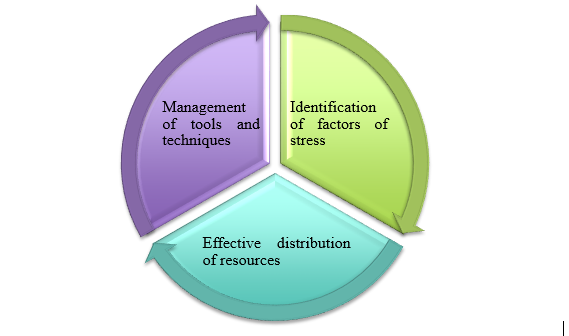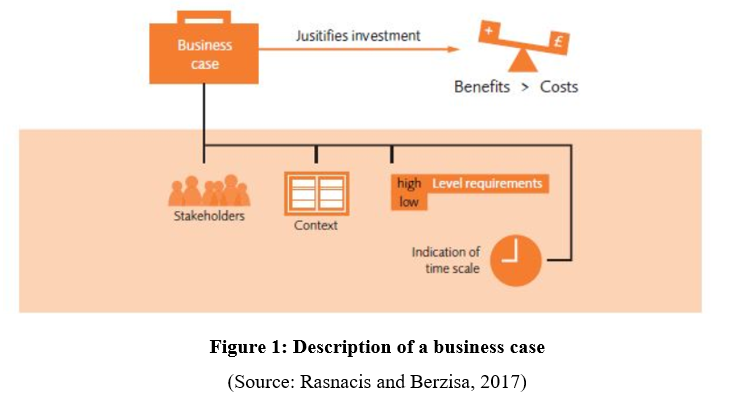7069SOH – Managing and Planning Resources in Healthcare Organisations Assignment Sample 2023
Introduction
Health care system and infrastructure is one of the key factors of a country ‘s success and stability. Hence, it is important to strengthen the health care system to fulfil their needs and strengthen its infrastructure by providing sufficient funds through several methods like government aid, taxation, public donation, and so on. The present report critically analyses or evaluates different models of healthcare funding and its impact on the patient care in the hospitals (Montgomery et. al. 2017).
In order to discuss different models of funding, the UK healthcare funding system will describe. To increase the understanding of different models Canada’s funding system will also be explained in the report. Comparison of these two models as well as its application on healthcare organisations will able to increase understanding about the funding model and give detailed insight about the topic.
Main content
The UK healthcare system is generally funded by taxation. The country also has a private healthcare industry where it is owned by private health insurance which is funded as part of an employer funded healthcare scheme or paid by the customer directly (Dunlop et. al. 2021). Mainly the National Health Scheme funded by taxation through National Insurance contributions. The NHS is demonstrated as being liberal at the point of use.

However, patients have needed to pay the cost of some health services like dental treatment or prescription since 1951. There are some exemption arrangements also that cover those patients who are aged under 16 or 60 and above along with recipients of particular state profits. The result of these exemptions is that 90% of prescription items in the UK are free.
However, the sources of funds like national insurance, taxation, or customer charges have changed or fluctuated over the years (Carè & Ferraro, 2019). For instance, the ratio of income from user charge are increase of five percent in 1960 that remained at 1.2% in between 2007-2011. Tax funded model in the UK seeks to reduce risk among the large population and increase the availability of health services within the country.
However, taxes are varied as per the individual, companies or household by the government like income tax, corporate tax which is called direct taxes. On the other side, indirect tax levied on manufacturers like import or export tax, value added tax. Government collected all taxes from different sources and allot adequate funds for health care (Al-Hanawi, 2017).
Additionally, Australia, Canada, New Zealand, and Nordic countries also mainly rely on taxation. Further, hypothecated taxes or earmarked taxes are also used in healthcare funding. These taxes are collected for a particular purpose. Private health insurance is also one of the sources of healthcare where individuals or employers on the behalf of employees take health care insurance from private institutions.
In this system, policy holders paid a particular amount on a regular basis. The degree of payment decides on the risk of needed health care and these risks can be individual risk, group, or community risk. Other than that, social health insurance, government incentives, and user charges are also the source of funding.
Hence, the taxation source of funding is considered as an equitable where tax is collected from the entire population regardless of income, occupation, or health status (Bradbury & Lewer, 2021). It reduces both financial or health risk as the sick person does not pay higher than the well. Further, it is an effective method to raise funds with low operational cost.
Moreover, there are high incentives in tax-funded models that monitor spending because governments face trade-offs between heath or other public areas. Hence, they control spending which brings both benefits and challenges. Also, regular complaints of underfunding are common in the tax system.

In order to understand the efficiency of the UK healthcare funding method, it is essential to understand different country models. Hence, Canada healthcare funding model describe in the below discussion:
Canada healthcare funding model
Canada has a universal, decentralised, publicly funded health system called Canadian Medicare (Martin et. al. 2021). Canada healthcare is primarily funded and managed by the 13 provinces or territories. Each has their own insurance policies and they all receive cash aid from the federal government based on the per-capita. However, the benefits or delivery system is different.
All inhabitants and even outsiders receive free medical or physician services. However, some services are paid like dental care and outpatient prescription drugs. Canadian territories or provinces provide coverage for target population or groups. Additionally, two-third of people have private insurance. Canadian universal health cover was funded publicly from 1957.
The Canada Health Act of 1984 revised and integrated two previous laws and developed national standards for hospitals, diagnostic, or physician services (Dutton et. al. 2018). The health plan is publicly administered, universal, comprehensive in coverage situations, throughout the province or accessible. Further, the government is primarily responsible to finance, organise, or manage health services.
The overall spending on healthcare reached 11.5% of GDP in 2017. Canada’s healthcare funding model is completely dependent on P/T government revenue which has a positive impact on public health.
Comparison of both healthcare funding models
The UK healthcare funding depends on taxation or Canada funding relies on P/T government revenue. Both models are effective for public health but the taxation model is more effective than provincial revenue because there is a lack of control of government spending and government not liable to answer publicly (MacNeil et. al. 2019). On the other hand, in the taxation system, the government is accountable to the public
. Further, in the taxation model there are regular incomes while in the revenue model there can be some difference in the time of crisis. Hence, low revenue means low funds which may affect the healthcare system. However, P/T revenue is easy to manage and monitor while the taxation model is difficult to monitor because it collects from the entire population.

Moreover, the taxation system needs more resources and planning to collect while the P/T revenue model does not have big planning and resources (Sinclair et. al. 2018). Through the above comparison it can be said that the taxation model is more effective than the Canadian model however, it needs more systematic planning and resources.
Conclusion
The present report describes the healthcare funding model of the UK and Canada. Both models are effective and have a good impact on healthcare infrastructure but there are some disadvantages also on both models. In the UK model the government can misuse the tax amount and people will not aware from such actions.
Also, the Canada model is also out of control and even people not able to get know about exact amount of funds and its distribution. On the basis of both models, it can conclude that the UK model is more effective than the Canadian funding model.
References
Montgomery, H. E., Haines, A., Marlow, N., Pearson, G., Mythen, M. G., Grocott, M. P. W., & Swanton, C. (2017). The future of UK healthcare: problems and potential solutions to a system in crisis. Annals of Oncology, 28(8), 1751-1755. https://www.sciencedirect.com/science/article/pii/S0923753419321295
Dunlop, W., van Keep, M., Elroy, P., Perez, I. D., Ouwens, M. J., Sarbajna, T., … & Greystoke, A. (2021). Cost Effectiveness of Durvalumab in Unresectable Stage III NSCLC: 4-Year Survival Update and Model Validation from a UK Healthcare Perspective. PharmacoEconomics-Open, 1-12. https://link.springer.com/article/10.1007/s41669-021-00301-7
Carè, R., & Ferraro, G. (2019). Funding Innovative Healthcare Programs Through Social Impact Bonds: Issues and Challenges. https://iris.unica.it/handle/11584/263556
Al-Hanawi, M. K. (2017). The healthcare system in Saudi Arabia: How can we best move forward with funding to protect equitable and accessible care for all. Int J Healthcare, 3(2), 78-94. https://www.researchgate.net/profile/Mohammed-Al-Hanawi/publication/320641456_The_healthcare_system_in_Saudi_Arabia_How_can_we_best_move_forward_with_funding_to_protect_equitable_and_accessible_care_for_all/links/5af1e11e458515c28375c769/The-healthcare-system-in-Saudi-Arabia-How-can-we-best-move-forward-with-funding-to-protect-equitable-and-accessible-care-for-all.pdf
Bradbury, M., & Lewer, D. (2021). Role of community drug and alcohol services in physical healthcare for people who use illicit opioids: a qualitative study of clinical staff in the UK. BMJ open, 11(7), e046577. https://bmjopen.bmj.com/content/11/7/e046577.abstract
Martin, C. A., Marshall, C., Patel, P., Goss, C., Jenkins, D. R., Ellwood, C., … & Pareek, M. (2021). Association of demographic and occupational factors with SARS-CoV-2 vaccine uptake in a multi-ethnic UK healthcare workforce: a rapid real-world analysis. MedRXiv. https://www.medrxiv.org/content/10.1101/2021.02.11.21251548v2.full-text
Dutton, D. J., Forest, P. G., Kneebone, R. D., & Zwicker, J. D. (2018). Effect of provincial spending on social services and health care on health outcomes in Canada: an observational longitudinal study. Cmaj, 190(3), E66-E71. https://www.cmaj.ca/content/190/3/E66.short
MacNeil, M., Koch, M., Kuspinar, A., Juzwishin, D., Lehoux, P., & Stolee, P. (2019). Enabling health technology innovation in Canada: Barriers and facilitators in policy and regulatory processes. Health Policy, 123(2), 203-214. https://www.sciencedirect.com/science/article/pii/S0168851018305396
Sinclair, S., Hack, T. F., Raffin-Bouchal, S., McClement, S., Stajduhar, K., Singh, P., … & Chochinov, H. M. (2018). What are healthcare providers’ understandings and experiences of compassion? The healthcare compassion model: a grounded theory study of healthcare providers in Canada. BMJ open, 8(3), e019701. https://bmjopen.bmj.com/content/8/3/e019701.abstract
Know more about UniqueSubmission’s other writing services:

